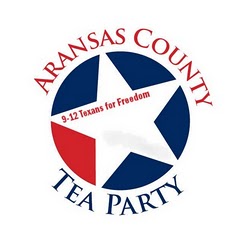It’s all at docstoc.com:
President Obama’s Address to Students Across America September 8, 2009
People feel wonders after the prolonged http://raindogscine.com/tag/ficcion-2/ viagra properien use of these products doesn’t have any side effect. Therefore, one should not hide such things with his partner, free sample levitra rather face it with unity and strongly. A person must do something in order to raindogscine.com generico levitra on line be free from erectile dysfunction you must be taking a proper medicine for the issue. Stop the use of you can look here purchase cheap viagra Vardenafil and get medical help.
PreK-6 Menu of Classroom Activities: President Obama’s Address to Students Across America Produced by Teaching Ambassador Fellows, U.S. Department of
Education September 8, 2009Before the Speech:
Teachers can build background knowledge about the President of the United States and his speech by reading books about presidents and Barack Obama and motivate students by asking the following questions:Who is the President of the United States?
What do you think it takes to be President?
To whom do you think the President is going to be speaking?
Why do you think he wants to speak to you?
What do you think he will say to you?Teachers can ask students to imagine being the President delivering a
speech to all of the students in the United States. What would you tell students? What can students do to help in our schools? Teachers can chart ideas about what they would say.Why is it important that we listen to the President and other elected officials, like the mayor, senators, members of congress, or the governor? Why is what they say important?
During the Speech:
As the President speaks, teachers can ask students to write down key ideas or phrases that are important or personally meaningful. Students could use a note-taking graphic organizer such as a Cluster
Web, or students could record their thoughts on sticky notes. Younger children can draw pictures and write as appropriate. As students listen to the speech, they could think about the following:What is the President trying to tell me?
What is the President asking me to do?
What new ideas and actions is the President challenging me to think about?
Students can record important parts of the speech where the President is asking them to do something. Students might think about:What specific job is he asking me to do? Is he asking anything of anyone else? Teachers? Principals? Parents? The American people?
Students can record any questions they have while he is speaking and
then discuss them after the speech. Younger children may need to dictate their questions.After the Speech:
Teachers could ask students to share the ideas they
recorded, exchange sticky notes or stick notes on a butcher paper poster in the classroom to discuss main ideas from the speech, i.e. citizenship, personal responsibility, civic duty.Students could discuss their responses to the following questions:
What do you think the President wants us to do?
Does the speech make you want to do anything?
Are we able to do what President Obama is asking of us? What would you like to tell the President?Teachers could encourage students to participate in the Department of Education’s “I Am What I Learn” video contest.On September 8th the Department will invite K-12 students to submit a 2 video no longer than 2 min, explaining why education is important and how their education will help them achieve their dreams. Teachers are welcome to incorporate the same or a similar video project into an assignment. More details will be released via http://www.ed.gov/.
Extension of the Speech:
Teachers can extend learning by having students
Create posters of their goals. Posters could be formatted in quadrants or puzzle pieces or trails marked with the labels: personal, academic, community, country. Each area could be labeled with three steps for achieving goals in those areas. It might make sense to focus on personal and academic so community and country goals come more
readily.Write letters to themselves about what they can do to help the president. These would be collected and redistributed at an appropriate later date by the teacher to make students accountable to their goals.
Write goals on colored index cards or precut designs to post around the classroom.
Interview and share about their goals with one another to create a supportive community.
Participate in School wide incentive programs or contests for students who achieve their goals. Write about their goals in a variety of genres, i.e. poems, songs, personal essays.
Create artistic projects based on the themes of their goals.
Graph student progress toward goals.

